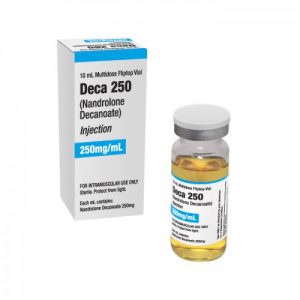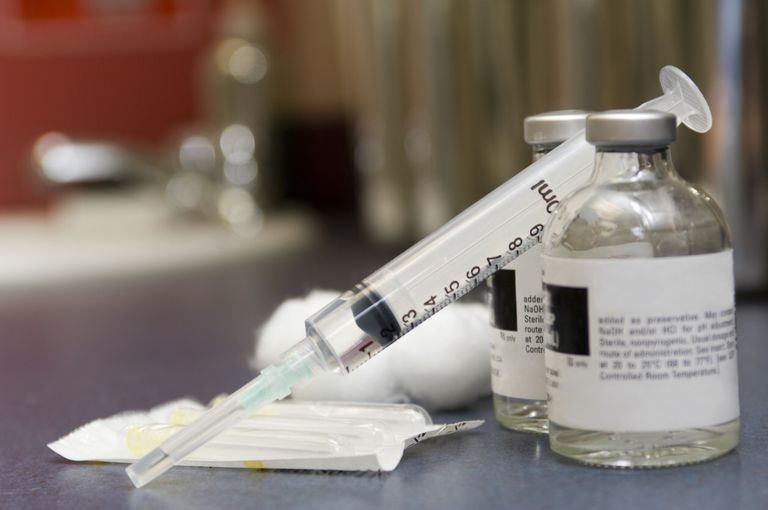In the mind of the inhabitants of the evil, the use of AAS (anabolic androgenic steroidamy) is associated with bodybuilders, since it is believed that the majority of athletes and regulars of gyms sit on steroids for both sporting and cosmetic purposes. But is AAS really so dangerous for health, as it is presented by representatives of the authorities?
Can clinical trials of AAS users use tend to be biased?
“As a rule, taking AAS, among other things, is especially fraught with the development of anomalies in serum lipids, increased blood pressure and an increased risk of thrombosis.”
The degree of manifestation of such adverse events may vary depending on the duration of administration and dosage of AAS, as well as on their type. It is noteworthy that these side effects are reversible at the end of the steroid course. With a long period of use of AAS (read: abuse), the athlete may have a higher risk of developing cardiac complications.
 Sader and coworkers (2001) noted that despite the lower concentrations of HDL in bodybuilders, AAS does not cause significant deviations in the work of the cardiovascular system. It is significant that athletes of power sports more than other athletes are susceptible to violations of the cardiac system, regardless of the administration of AAS. For this reason, the “siloviki” athletes significantly increase the likelihood of developing cardiovascular diseases in the event that these athletes take steroid drugs. Nevertheless, changes in the lipid profile on the basis of the administration of AAS can lead to significant cardiac pathologies.
Sader and coworkers (2001) noted that despite the lower concentrations of HDL in bodybuilders, AAS does not cause significant deviations in the work of the cardiovascular system. It is significant that athletes of power sports more than other athletes are susceptible to violations of the cardiac system, regardless of the administration of AAS. For this reason, the “siloviki” athletes significantly increase the likelihood of developing cardiovascular diseases in the event that these athletes take steroid drugs. Nevertheless, changes in the lipid profile on the basis of the administration of AAS can lead to significant cardiac pathologies.
In the 60s and 70s of the XX century, no one restricted the use of steroids, so bodybuilders, powerlifters and wrestlers had the opportunity to take such drugs without any legal restrictions. Especially at that time, the Deca (nandrolone) and Dianabol were popular. Those few users of these drugs, as scientists at the University of Gothenburg found out (the study materials were published in the Journal of Sports Medicine and Scandinavian Science), steroid use did not affect life expectancy.
When you look at the legendary bodybuilders of the golden era of bodybuilding, for example, F. Colombo, A. Schwarzenegger, L. Ferigno, F. Zane, D. Dreper it becomes obvious that most of the inhabitants of the planet Earth can not boast of the same forms.
In professional sports today, a lot of money is spinning, and athletes almost all sit on steroids. Money also motivates professional athletes with a head to go to medical “jungle”. A recent scandal in the United States with the participation of Victor Conte comes to mind, which caused the destruction of careers, in particular, B. Bonds, M. Jones and T. Montgomery.
Tour de France
 The cycling competitions of the Tour de France do not dispense with reports of the use of doping. It may seem that the riders on average live less than other people, but judging by the new study, a slightly different picture is drawn: on average, the riders live longer than the average French men by 6.3 years.
The cycling competitions of the Tour de France do not dispense with reports of the use of doping. It may seem that the riders on average live less than other people, but judging by the new study, a slightly different picture is drawn: on average, the riders live longer than the average French men by 6.3 years.
Recently, at a meeting of the European Community of Cardiology, 786 cyclists were observed from 1947 to 2012. The researchers compared the mortality of cyclists with the mortality of ordinary men and concluded that the death rate of the first was 40% lower than that of the latter.
Cycling racers were decided to be divided into three groups: the first group included athletes who competed in competitions in 1947-1970, at that time amphetamine and cocaine were popular doping drugs in the Tour de France. The second group performed in 1971-1990 – then anabolic steroids were widely used as doping. The third group performed in 1991-2012, when popular doping drugs were growth hormone and erythropoietin.
Participants in the Tour de France (the race can be compared to a running marathon for several days a week for 3 weeks) was actually 30% less likely to suffer from a heart attack / stroke death, compared to the general population. Cyclists also suffered less from cancer than others.
Powerlifting
In 2000, a very tendentious study appeared on behalf of Finnish epidemiologists from the National Institute of Health. In particular, the report stated:
“The abuse of supraphysiological dosages of AAS leads to the emergence of cardinal side effects. The objective of the study was to analyze the mortality factor, together with the causes of premature mortality in subjects suspected of taking AAS for non-medical purposes for several years. An analysis was made of the deaths of 62 powerlifters in the weight category from 82 to 125 kg (competitors in Finland in 1977-1982) and the rest of the population.
Researchers have identified a 5% greater death rate of pro-powerlifters than other people.
 In 2014 researchers from Sweden studied materials for a 30-year period of about 1200 athletes professionally engaged in power sports.
In 2014 researchers from Sweden studied materials for a 30-year period of about 1200 athletes professionally engaged in power sports.
The task of the study was to study the factor and causes of death in ex-sportsmen from Sweden, who competed in powerlifting, wrestling, wrestling, track and field athletics in 1960-1979 and suspected of using AAS. In the 20-50 age group, the mortality rate was raised to 45%. However, analyzing the general data of the study, the mortality rate was not increased.
Ex-athletes were 2-4 times more likely than ordinary people to commit suicide at the age of 30-50.
“The risk of suicide mortality among athletes aged 30 years was 4 times higher than that of ordinary people; 2.8 times higher at the age of 40; 2 times higher at the age of 50 years. ”
At athletes, the mortality rate from malignant neoplasms was lower than in ordinary people. The increased risk of death from suicide in athletes is balanced by the risk of death from cancer. But athletes are 30% less likely to “earn” cancer than other people. In general, powerlifters live to the same age as the average Swedes.
Most likely, the side effect of AAS can potentially have some effect on the reported increased mortality from suicide in athletes of power sports who took AAS in 1960-79. A healthier lifestyle for other athletes leads to a lower risk of developing malignant tumors.
In 2013, the same Swedish researchers established an obvious link between taking AAS and mental disorders. However, for a more complete picture characterizing such a connection, further research is needed.
Sudden and unnatural death due to the intake of anabolic androgenic steroids
In 2014, the Department of Forensic Medicine (Australia, New South Wales) set out to determine the causes of deaths from AAS, as well as characteristics, toxicology and pathology caused by AAS, in the period 1995-2012. It was studied only 24 cases involving the use of steroids. The subjects of cases were men predominantly 31 years of age. They died, as a rule, from poisoning with steroids (62.5%), from suicide (16.7%) and from murders (12.5%).
Disturbances in the balance of testosterone / epitestosterone are registered in 62%, followed by metabolites of nandrolone (58%), stanozolol (33%) and methandienone (20.8%).
In most subjects, foreign substances were found in the body. 23 dead people out of 24 during life took, in addition to steroids, other drugs, mainly sleeping pills, opiates, stimulating recreational drugs, sedatives, alcohol and sometimes antidepressants.
In almost half of the cases, testicular atrophy was recorded, as well as testicular fibrosis with suppression of spermatogenesis. In 30% of cases, left ventricular hypertrophy was noted, in 26% – a medium-severe degree of narrowing of the coronary arteries.
Summarizing the above, the athletes mostly died at the age of 30 from poisoning with drugs, while taking other substances besides steroids during their lifetime. At the majority of athletes at autopsy extensive cardiovascular diseases were established.







